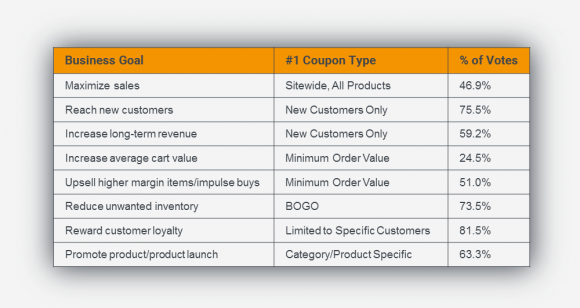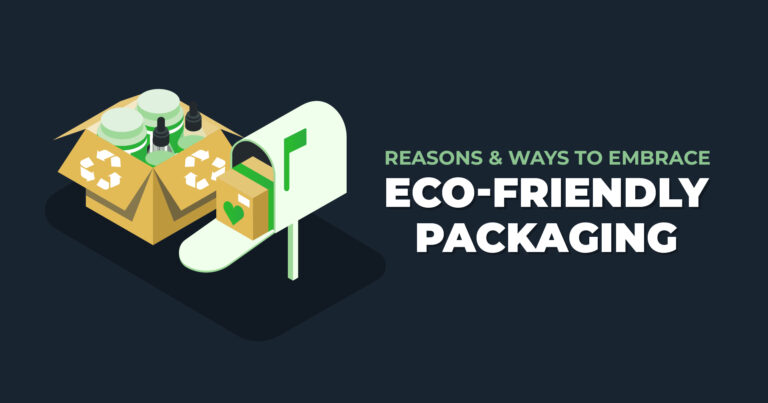5 Ways to Offload Surplus Inventory with Marketing
Every retailer deals with surplus inventory at one point or another, thanks to returns, lackluster marketing, or a slow selling season. How you deal with it is what differentiates your business from the others—and smart retailers turn to their marketing team.
With a few landing page changes, additional ads, and social promotion, you can get rid of your surplus and then some. Use these ideas to sell more and hold onto less next time you find yourself with too much product.
Run an Instagram Flash Sale
With Instagram’s growing business tools, it’s becoming easier and easier to sell product from this photo-forward platform. For example, business can now use product tagging to entice customers to learn more about the product.
This non-ad advertising option takes customers through a few steps before hitting a landing page, “When they click that information bubble, they’ll be taken to a more complete description of the item, accompanied by a ‘Shop Now’ button. If they click the CTA, they’ll be taken to the brand’s site to purchase,” according to a recent AdEspresso Instagram update post. Nonetheless, the “clickability” factor is high and may be just what you need to get customers to act.
You can also create sponsored posts featuring a “Learn More” button, which seamlessly drives customers from the photo to a landing page immediately.
The key is combining these new features with an Instagram flash sale. Use hashtags like “shop small,” “flash sale,” “shopping online,” and “discount” to expand your reach. Don’t forget to set a time limit—like 24 hours—to drive shoppers to act.
Actively Promote Coupons
One of the best ways to offload surplus product is to discount it. The trick is choosing a discount that will motivate customers and then promoting it.
To determine which discount will be most effective at attracting customers and offloading the surplus, turn to this 2016 retailer survey, in which 73 percent of retailers said BOGO (Buy One, Get One), is the best way to “reduce unwanted inventory.” You can see the full results in the graph below to determine which type of discount you want to use.

The second important factor is promotion. You can create a great discount, but if no one knows about it, it won’t be effective. Luckily, you don’t have to reinvent the wheel here. Start by promoting the discount through your normal channels, like social media and email.
If you have an ecommerce store, promote it on the homepage with a banner or sidebar ad as well, which most major brands do. Don’t forget about in-store promotions if you have a brick and mortar location. The more people see it, the more effective you’ll be.
Run a PPC Campaign
If you need to get excess product in front of people who will buy it, PPC may be the way to go — especially when combined with a promotion or discount. If this is your first time running a PPC campaign, follow these steps to get started.
Step 1: Choose your platform. You can run PPC campaigns on a number of platforms, but Google Adwords is a good place to start because it has the largest audience and the experience is user-friendly.
Step 2: Choose your keywords. Use Google’s Keyword Planner to determine which ones will be best for your product. Look for keywords with low to medium competition and high search volume. This means a lot of people are looking for it, but few people are promoting it.
Step 3: Create campaigns and ad groups to test what’s working and what’s not. “The most important aspect to keep in mind when creating campaigns and adgroups is to keep it organized. When the structure is organized, makes sense, and can be easily tweaked, you will find more success,” says Jan Eliason, SEO expert with Boostability.
Step 4: Prep ad and landing page copy. Ensure that your page is ready for visitors and remember to test a number of text variations for the ad itself.
“Re-Brand” It
Perhaps the angle you’re using to sell the product is what’s ineffective. In this case, it’s time to “re-brand” the item(s): “We will re-photograph an item for the website, we will post a blog about the uses and advantages of the product, or we will display it differently in our brick and mortar store,” says Vanessa Cooreman Smith, Owner of Flourish Boutique.
Like Cooreman Smith, you should photograph the product again in a different setting, promote features that weren’t the focus originally (blog post, social media, sales calls), and track success. This can be done more than once if you’re still struggling to get rid of the surplus items.
Another way to “re-brand” the product is to bundle it, and sell it as a package for a specific person or situation. For example, bundle your Spring Lilac Body Lotion with a scrub brush, face mask and body wash to create an “All Natural Spa Bundle.”
To make your bundling more effective, consider aligning messaging with a holiday or upcoming season. You could turn that “All Natural Spa Package” into a graduation gift with messaging like, “Treat your favorite grad to everything they need for a relaxing evening.”
Retarget Potential Customers
The average cart abandonment rate is 69.23 percent, according to data from 37 different studies, compiled by Baymard Institute. This may be the reason why you’re dealing with surplus product—a great way to battle it is with retargeting.
If customers reached the point of checkout, they’re interested in the product; they just need a little encouragement to input their credit card information. That’s where retargeting comes in. “Retargeting ads are a form of online targeting advertising and are served to people who have already visited your website or are a contact in your database (like a lead or customer),” according to Hubspot.
Pixel-based retargeting is your best option for offloading surplus to customers who have shown interest in the product but didn’t buy. List retargeting is ideal for reaching a wide variety of customers, whether they’ve clicked on the product before or not.
If you’ve never run a retargeting campaign before, check out Retargeting 101 from AdRoll. This extensive tutorial will prepare you for your first big campaign.
Time to Move Product
Use these simple tools and ideas to offload your surplus product, earn more customers, and boost revenue. Find which one works best with your audience and perfect the process so you can use it time and time again.
Jessica Thiefels has been writing and editing for more than 10 years and spent the last six years in marketing. She stepped down from a senior marketing position to focus on growing her own startup and consulting for small businesses. She’s been featured on Forbes and Business Insider and has written for sites such as Lifehack, RetailNext, Manta, StartupNation and more. When she’s not working, she’s enjoying sunny San Diego with her husband and friends or traveling somewhere new. Follow her on Twitter (@Jlsander07 ) and connect on LinkedIn.



